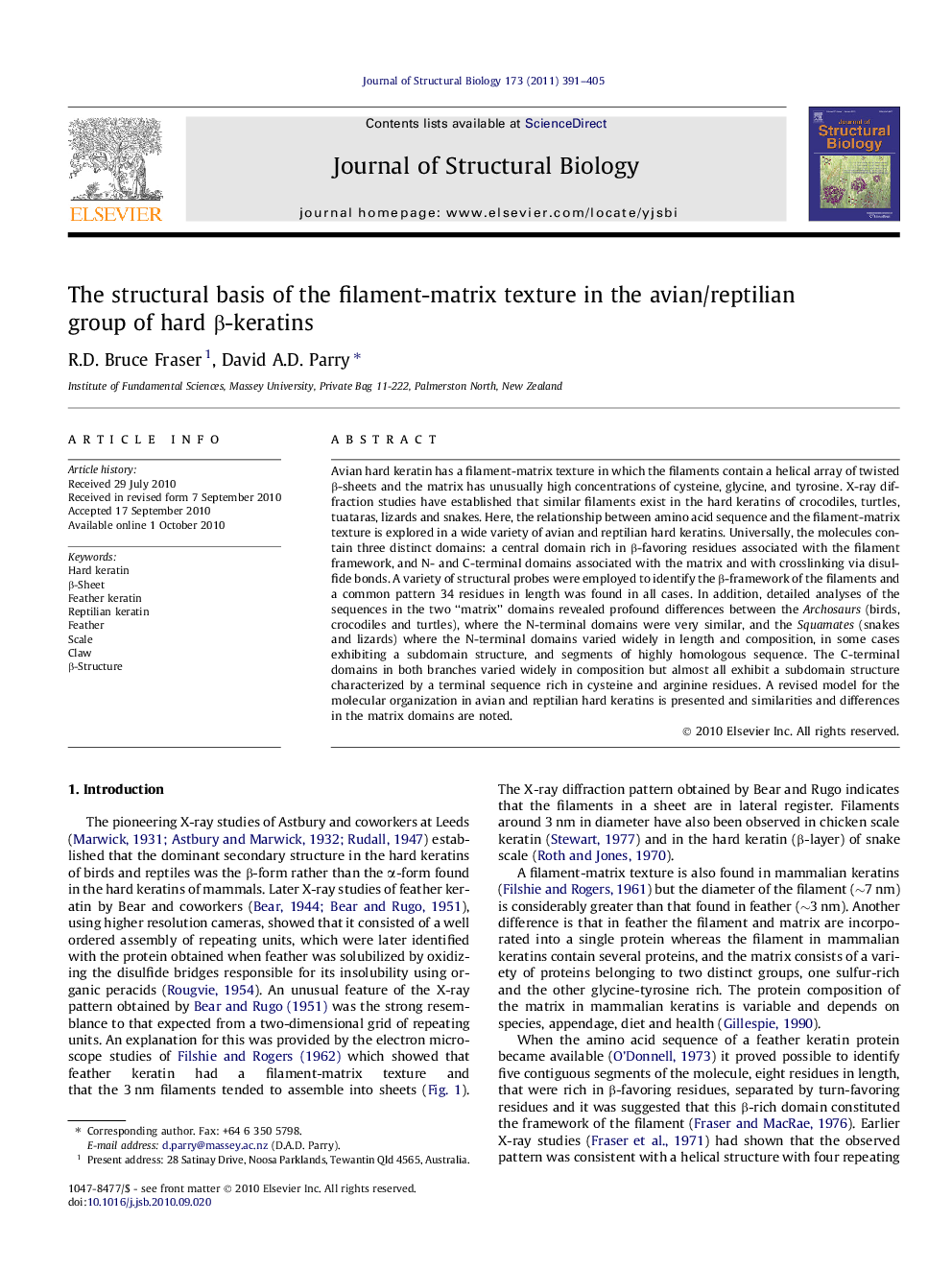| Article ID | Journal | Published Year | Pages | File Type |
|---|---|---|---|---|
| 2828724 | Journal of Structural Biology | 2011 | 15 Pages |
Avian hard keratin has a filament-matrix texture in which the filaments contain a helical array of twisted β-sheets and the matrix has unusually high concentrations of cysteine, glycine, and tyrosine. X-ray diffraction studies have established that similar filaments exist in the hard keratins of crocodiles, turtles, tuataras, lizards and snakes. Here, the relationship between amino acid sequence and the filament-matrix texture is explored in a wide variety of avian and reptilian hard keratins. Universally, the molecules contain three distinct domains: a central domain rich in β-favoring residues associated with the filament framework, and N- and C-terminal domains associated with the matrix and with crosslinking via disulfide bonds. A variety of structural probes were employed to identify the β-framework of the filaments and a common pattern 34 residues in length was found in all cases. In addition, detailed analyses of the sequences in the two “matrix” domains revealed profound differences between the Archosaurs (birds, crocodiles and turtles), where the N-terminal domains were very similar, and the Squamates (snakes and lizards) where the N-terminal domains varied widely in length and composition, in some cases exhibiting a subdomain structure, and segments of highly homologous sequence. The C-terminal domains in both branches varied widely in composition but almost all exhibit a subdomain structure characterized by a terminal sequence rich in cysteine and arginine residues. A revised model for the molecular organization in avian and reptilian hard keratins is presented and similarities and differences in the matrix domains are noted.
